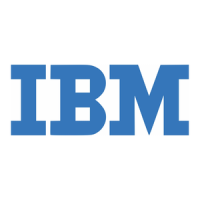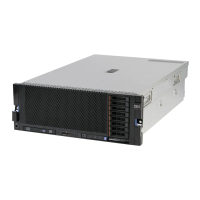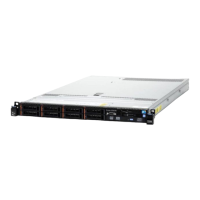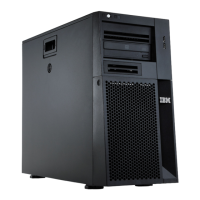

Do you have a question about the IBM RS/6000 Enterprise Server M80 and is the answer not in the manual?
Provides a general overview of the system, including logical and physical descriptions.
Describes the processor configurations for Model M80 and Model 6M1 systems.
Details memory configurations, including capacities, riser cards, and DIMM types.
Outlines the components and features of the primary I/O drawer.
Explains the procedures for powering the system on and off.
Details the firmware console selection sequence at system boot time.
Illustrates the physical arrangement of CEC and I/O drawers within a rack.
Explains the mapping of failing FRUs using AIX and physical location codes.
Guides trained service personnel through the system for isolation and error recovery procedures.
Explains checkpoints, error codes, and SRNs that appear during system initialization.
Lists error codes and recommended actions for identifying and replacing FRUs.
Describes the service processor's role in monitoring system health and performing corrective actions.
The starting point for problem determination, guiding to appropriate MAPs or reference information.
A subset of the Entry MAP, designed to save time for specific problem types.
Procedure to locate power problems in CEC, I/O drawers, or rack.
Used to locate defective FRUs not found by normal diagnostics.
Explains the initial program load flow and lists checkpoints on the operator panel.
Lists service processor checkpoints and their descriptions.
Lists firmware checkpoints that occur during system startup.
Lists four-character progress codes and checkpoints in the format 8xxx through Exxx.
Lists SPCN error codes with descriptions and possible failing FRUs.
Lists firmware and POST error codes with descriptions and possible failing FRUs.
Lists error codes detected by the service processor and their possible failing FRUs.
Details the default boot list and service mode bootlist, including boot sequences.
Describes feature codes for ordering and installing additional processor capacity.
Provides an overview of the process to enable Capacity Upgrade on Demand features.
Provides instructions to enable additional processors as needed using the chcod command.
Discusses the various functions and capabilities of the service processor.
Explains the structure and access methods for service processor menus.
Lists the primary menu options for service processor configuration and information.
Details the options for configuring service processor settings like passwords and surveillance.
Provides access to system configuration information, error logs, and network parameters.
Allows access to options for setting, removing, and managing passwords.
Allows viewing and clearing the system error log for troubleshooting.
Allows configuration of SCSI hard disk spin-up delay and SCSI IDs.
Allows selection of a method for booting the system, including standalone diagnostics.
Provides precautions for handling static-sensitive devices to prevent damage.
Details procedures for safely powering off and on the system.
Identifies hot-pluggable FRUs and notes on system power removal.
Discusses installing and removing PCI adapters, including hot-pluggable ones.
Provides instructions for removing and replacing memory riser cards and DIMMs.
Details the removal and replacement procedures for CEC drawer power supplies.
Provides instructions for removing and replacing internal disk drives.
Describes the removal and replacement of the operator panel.
Details the removal and replacement procedures for the system battery.
Provides an exploded view and parts list for the CEC drawer card assembly.
Illustrates and lists the internal cables for the CEC drawer.
Lists various external cables used with the system.
Lists part numbers for different keyboard and mouse models.











